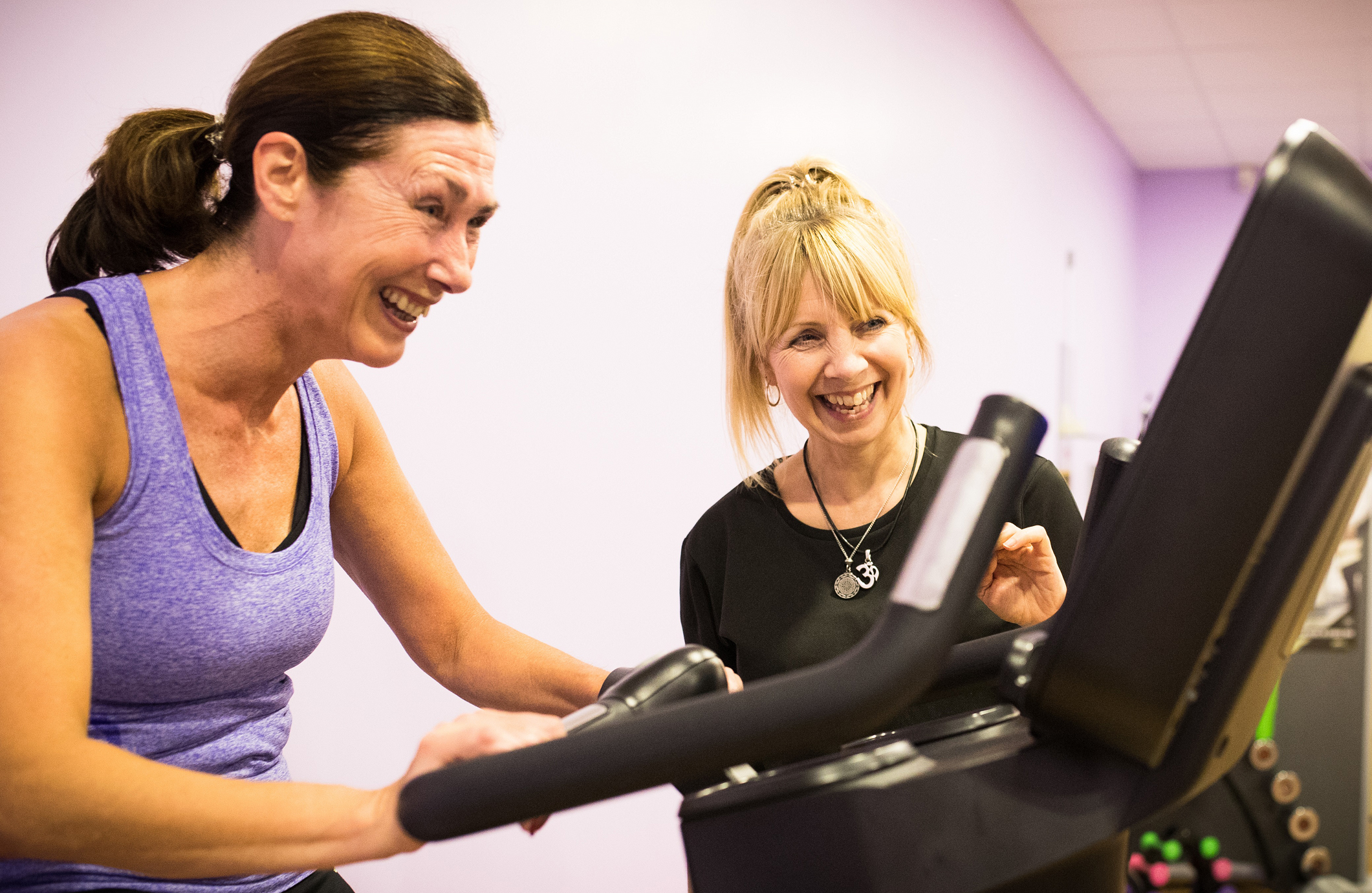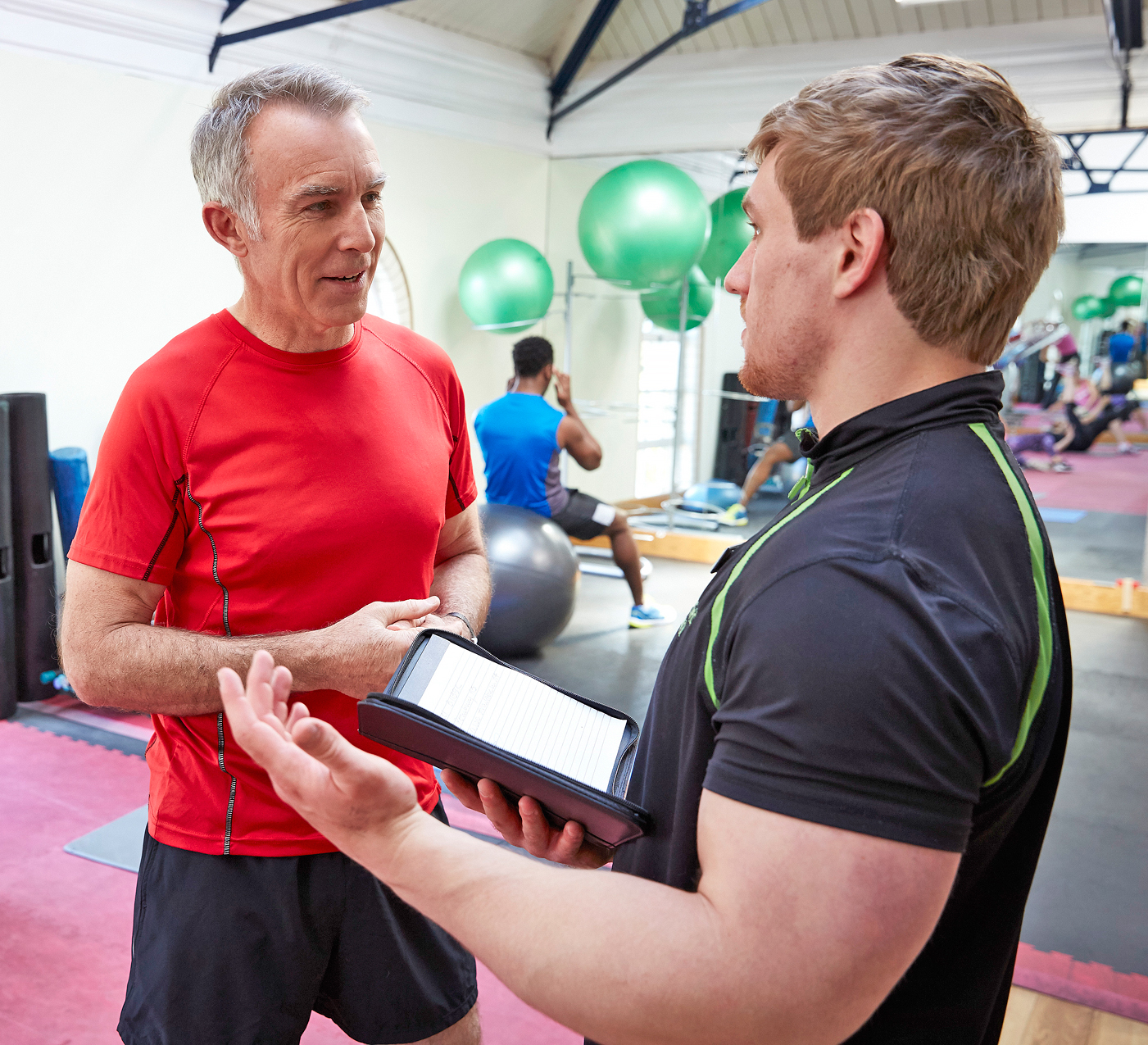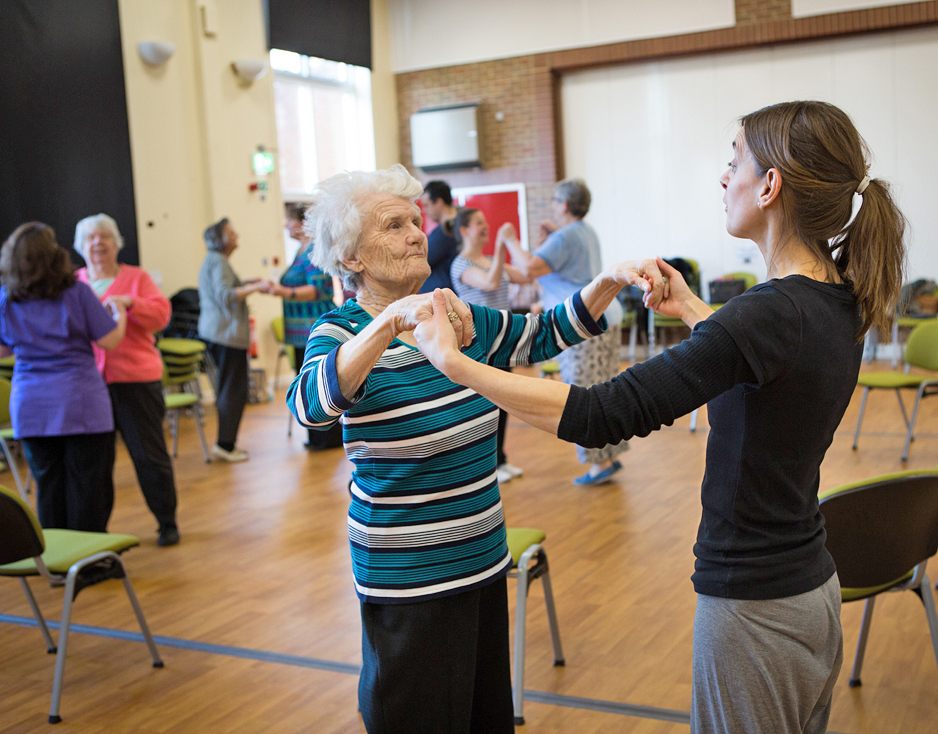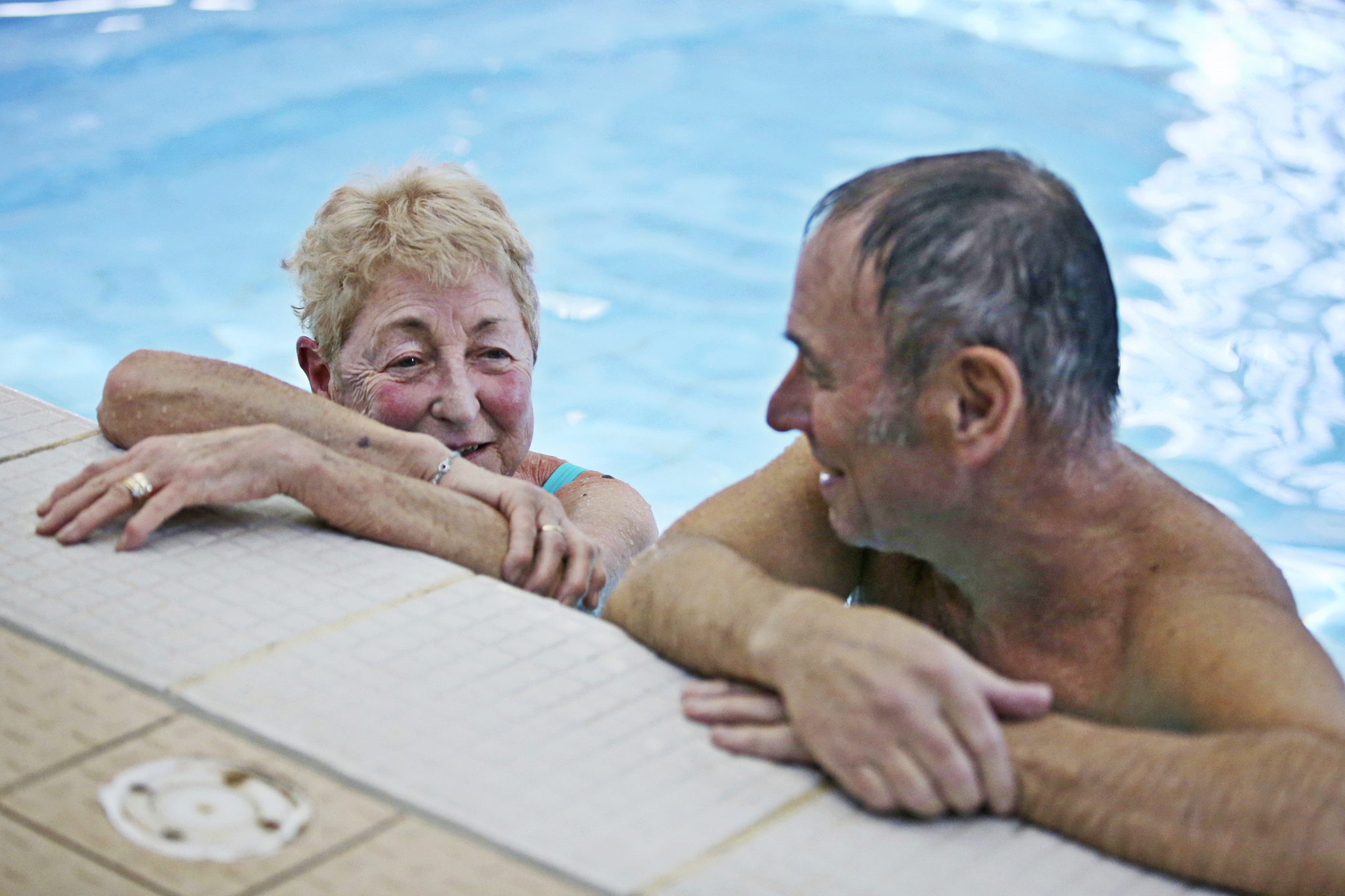|
The UK’s population is ageing, fast. And with ageing comes a growing proliferation of health problems including disease, disability and dementia.
We assume growing older goes hand in hand with a loss of function and resilience but a major new report – Reimagining Ageing – produced by not-for-profit health body ukactive with the DataHub and Sheffield Hallam University argues that our twilight years can be healthy, independent and happy, providing one key constituent is in place: physical activity.
When you consider that by 2040 nearly one in four people will be 65 or older, and a quarter of those will be living with a life-limiting long-term condition, ageing is an issue we cannot afford to ignore.
Active years
Using data collected by the DataHub from more than 500 million individual visits to over 2,000 leisure facilities, ukactive’s Reimagining Ageing report provides a clear picture of our ageing nation. It demonstrates how, by closing the fitness gap, we have the opportunity to add healthy, independent and active years to lives across the UK. In fact, the experts believe that not only can we slow the rate of decline often associated with growing old but we can actually reverse it.
“Increased fitness can achieve this at any age, no matter how many long-term conditions the person has,” says Professor Sir Muir Gray, former Chief Knowledge Officer for the NHS, who firmly believes living independently and productively into our later years is achievable. “To grasp this opportunity and improve the national experience of growing old, we need to get older people more active, more often.”
There are significant economic advantages too. Seventy per cent of the nation’s wealth is currently held by over-50s; as a cohort they spent £320bn in 2017, yet data shows that older adults (over-55s) account for just one in five public leisure facility memberships. The usage rates of those aged over 65 falls even further, accounting for only nine per cent of visits. So how can health and fitness providers use this insight to harness the opportunities and meet these challenges?
Strength in numbers
The first step is to make better use of data to attract and retain the ageing population. “Historically, our sector has been forced to base business decisions on straw polls, surveys or guesswork,” explains Utku Toprakseven, director of sports intelligence at 4global, which manages the DataHub.
“Now we have real-time information on millions of older consumers’ lifestyles and activity habits, and can put it at the fingertips of decision makers. There is strength in numbers. Operators are already proving how focusing on what their data tells them can deliver commercial returns, participation outcomes and social impacts.”
Welcome to wellness
The second step is to embrace accessible activity facilities, which offer an inclusive, welcoming and holistic physical activity experience for everyone, including older adults. ukactive and Sport England are developing a programme that would see the UK’s ageing leisure stock replaced by community-focused wellness hubs. Bringing together swimming pools, gyms and multi-sport facilities with GP drop-in centres, rehab services, libraries and police stations could have a powerful impact on our local communities’ health and wellbeing.
Existing wellness hubs have already seen increased usage and have offered significant cost-savings to local authorities. The challenge now lies in facilitating a national roll out as, currently, the initiatives broadly exist in isolation and aren’t fulfilling the potential impact of a cumulative approach.
Past and projected data from the period and cohort life tables, 2016-based, UK: 1981 to 2066. Office for National Statistics. 2017.
Active Lives Adult Survey: November 16/17 Report.
Sport England. March 2018.
K. Barnett et al, Epidemiology of multimorbidity and implications for health care, research, and medical education: a cross-sectional study.
The Lancet. May 2012.
Moving Communities: Active Leisure Trends 2018 Report. ukactive Research Institute and Datahub. 2018.
|
A number of operators and providers have embraced schemes to help attract and retain older adults. Here’s what they’re doing and how…
Serco Leisure
Serco manages more than 60 facilities on behalf of community leisure trusts, local authorities, universities and associations, and has over 90,000 fitness members. It runs a number of programmes to support older adults.
Two examples in Bolton are the Active Lives and Phase 4 Cardiac Rehabilitation programmes. Through Active Lives, older adults are given a leisure card offering half-price access to those aged 60 and older and free access to those aged 65 and over, enabling them to access programmes such as swim and gym, low-impact circuits, tea dances and indoor bowling.
At its Horwich, Farnworth and Leverhulme sites, Serco has worked with Bolton Council and Bolton Hospital for the past five years to support people in their transition from Phase 3 to Phase 4 Cardiac Rehabilitation. Patients are referred by doctors to a 10-week exercise programme at Serco Leisure facilities and issued a free leisure card. Once Phase 4 is complete, participants are provided with a discounted leisure programme to continue on their journey of rehabilitation.
In 2017, 194 customers completed the Phase 4 Cardiac Rehabilitation programme in the Horwich, Farnworth and Leverhulme sites and there were 1,450 follow-up visits by those customers.

Serco works with Bolton Council and Bolton Hospital to support people in their transition from Phase 3 to 4 Cardiac Rehabilitation
Graves Health & Sports Centre
At Graves Health & Sports Centre in Sheffield, health professionals work with sport and exercise providers to improve health outcomes by supporting patients like the elderly to be more active.
The centre has swimming and training pools, a gym and strength gym, a Spin studio, tennis courts, a gymnastics and trampolining hall and a dementia-friendly cafe. It’s also one of the National Centres for Sport and Exercise Medicine homes, with 19 consultation rooms.
Graves supports local council and NHS providers to deliver their services, including weight management and diabetes-prevention programmes. This helps tackle barriers to people being physically active, including fear of attending leisure centres and a lack of familiarity, creating inclusivity. After programmes finish, attendees are offered structured opportunities to return and maintain long-term participation, either on a pay-as-you-go basis or as members.
The co-location of clinical services has had a significant impact on community behaviours. Since January 2018, 65,000 clinical visits have taken place, with tailored exercise interventions prescribed to patients with conditions including cancer, Parkinson’s disease and heart disease, with 2,117 people attending cardiac-rehabilitation sessions between January and March 2018.

Seventy per cent of the nation’s wealth is held by over-50s, yet they account for just 20 per cent of public leisure facility memberships shutterstock/LIDERINA
Nuffield Health
Nuffield Health’s CIMSPA-recognised fitness training focuses on helping its fitness professionals engage with a range of clients, including older members. Topics include motivation and coaching, as well as emphasising “member first” programming to ensure individual needs are met.
Within its health MOT training, Nuffield Health develops PTs’ understanding of health topics they may encounter when working with older adults, such as cardiovascular disease, obesity and diabetes, and when to seek further input from a medical practitioner. Recovery Plus training increases their applied knowledge on post-surgical rehabilitative programming, enabling them to support people who have undergone procedures like knee surgery.
Since the beginning of 2018, the most frequent gym users, by age band, are those aged 70 to 79; last August they visited, on average, eight times. In comparison, those aged 30 to 39 averaged just six visits.

Nuffield develops PTs’ knowledge of post-surgical rehabilitative programming
Dance to Health
Aesop’s Dance to Health (D2H) programme aims to help older people who have fallen, or are at risk of falling, to improve strength and balance. It offers dance classes tailored to the needs of older people which incorporate the proven exercise programmes PSI/FaME (Falls Management Exercise) and Otago to help rebuild strength and balance.
Evidence from the pilot indicated the initiative can be associated with lower overall cost of managing falls. An expanded Phase 1 is currently running, with an associated study to measure effectiveness, cost-effectiveness, demand and suitability for NHS commissioning.
The programme is being delivered in six community venues such as church and sports halls. Sessions are delivered weekly over six months. In each location, partnership funding and involvement of health partners such as Clinical Commissioning Groups and local authority public health or adult social services is required. For programme delivery, Aesop works with regional dance partners and dance organisations.
Aesop is planning a second phase roll out from October 2019. The aim is to increase participants from 600 to 3,000, and to run a randomised controlled trial with the University of Oxford to better understand its impact on health and wellbeing outcomes.

Dancing boosts strength and balance PHOTO: HELEN MURRAY
Swim England Dementia-Friendly Swimming Project
Swim England developed a project supported by the Department of Health and Social Care in collaboration with national agencies, including the Alzheimer’s Society, to achieve a sustainable, comprehensive change in practice to boost year-on-year swimming participation numbers for people living with dementia, as well as their carers.
To support this, Swim England modified facilities, education and staff training, and developed service delivery models and resources, to help pools to become truly dementia-friendly and effective in attracting and retaining new customers.
During the project’s three years, 102 dementia-friendly pools were created by 48 leisure operators, 895 leisure staff were trained, 531 dementia participants and 745 people with a mix of conditions took part in sessions, alongside 335 carers. In total 1,181 people became Dementia Friends.
Participants said they felt improvements in their psychological and social wellbeing, water confidence, swimming ability and balance, and a reduction in pain. A study using the Model for Estimating the Outcomes and Values in the Economics of Sport estimated the return on investment to the NHS was £1.42 per £1 invested, rising to £2.19 assuming carers participated at the same intensity and duration.

Swim England aims to boost the participation of people living with dementia PHOTO: LEE DOBSON PHOTOGRAPHY
|
|
